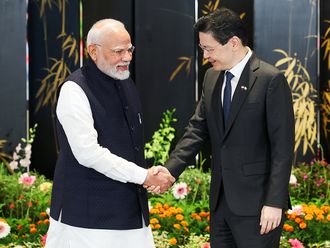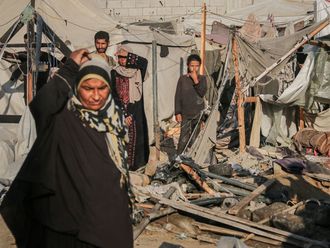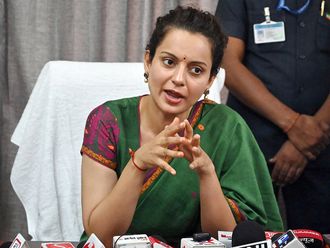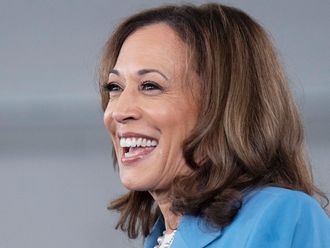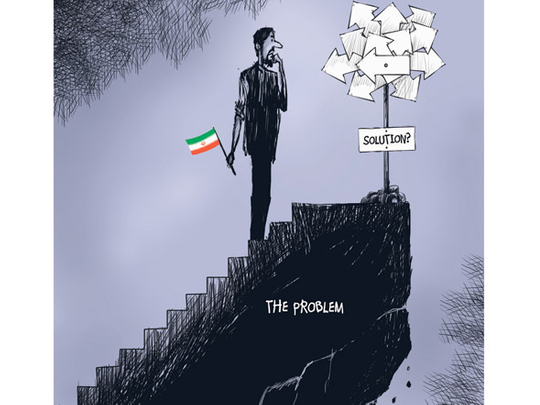
When talking about the current crisis in Iran, people often ask me who is on which side? In a world used to Manichean divisions, this is not surprising. People want a clear-cut picture, showing in black and white that forces stand on either side of the divide.
They also want to know who "the real leaders" of the two rival camps are.
"Give us names," they plead.
The problem is that the current situation in Iran is too complicated to fit into a facile binary pattern. Although two broad camps could be distinguished it must not be forgotten that both are further divided into numerous shades while, at the edges, they overlap.
Let us start with the so-called Khomeinist camp, which still appears to be in power.
Originally, it consisted of a hard core of Shiite clerics, perhaps around 10,000, leading a coalition of bazaar merchants, lower-middle-class elements, urban lumpen proletariat, and, as time went by, larger and larger military and security units created to defend the new regime. In the initial phases of the revolution, the coalition also included a number of leftist groups.
Over the years, a growing new class of civil servants and technocrats, many of them well trained in foreign universities, was added to the mix.
That coalition started to unravel only weeks after the Khomeinist seizure of power. First went the leftist groups. Then it was the turn of the merchants and their political representatives to be marginalised. By the end of the 1990s the coalition had become little more than a new ruling class consisting of clerics, bureaucrats and security men.
The election of President Mahmoud Ahmadinejad in 2005 marked a major turning point because it was an attempt to revive the old coalition by clipping the wings of the new ruling class. Ahmadinejad's populist discourse and his determination to replace old figures in power with young and often unknown ones succeeded in reviving part of the original Khomeinist passion and, for a time at least, helped reverse the inevitable historic decline of the revolutionary regime.
Stricken by hubris, perhaps, Ahmadinejad went too far in purging the regime of the nomenclature.
Opposition
Which brings us to the second camp, that of the opposition, now variously known as the green camp or the pro-democracy movement. This camp consists of several broad layers. The first includes millions of people with various economic, social and political grievances against a regime whose performance does not match its rhetoric. In a normal situation this segment of the opposition would be calmed, at least temporarily, by voting in a government of their choice. However, that option is not available in Iran if only because the system does not allow the formation of proper political parties and the holding of genuinely competitive elections. This mass of discontent has provided a vast reservoir of muscle and energy waiting to be deployed for battle.
The second element within the opposition camp consists of parties and groups that either never accepted the Khomeinist revolution or broke with it soon afterwards. Victims of decades of repression and unable to organise openly inside Iran these groups lack effective presence in many parts of the country. What compensates for that is their political experience in riding whatever tide of discontent that events beyond their control might produce against the regime. They know how to lead crowds, spread slogans, organise strikes and fight street battles against the security forces.
None of all that would have pushed the country to the brink had it not been for a third element that started joining the opposition camp soon after Ahmadinejad's first election victory.
That third element consists of thousands of clerics, technocrats and politicians, some of them claiming the fatherhood of the Khomeinist regime, who have been squeezed out of power and privilege by Ahmadinejad. After 25 years of enjoying social respect, financial facility and political deference, these elements suddenly found themselves on the dole, so to speak. Clerics who controlled lucrative trade channels saw their privileges taken away and given to the Islamic Revolutionary Guard Corps (IRGC), Ahmadinejad's principal source of support. Technocrats who had moved from membership of parliament to governorship of provinces to ambassadorial assignments suddenly found themselves ignored and, in some cases, subjected to investigation on charges of corruption.
Forced to fight for their privileges, if not their actual freedom, these elements initially chose temporisation as a tactic. They hoped that they could wait out Ahmadinejad. This is why last June they fielded a strong presidential candidate in the person of former prime minister Mir Hussain Mousavi in the hope of dislodging Ahmadinejad. Their strategy failed because the IRGC, backed by Ayatollah Ali Khamenehi, was determined to defend the emergence of a new privileged class with Ahmadinejad as its current spokesman.
The two camps look like two giant ships without captains, gyrating in a storm in uncharted waters without a clear destination. So far, neither side appears capable of offering a way out.
Amir Taheri is an Iranian writer based in Europe.


